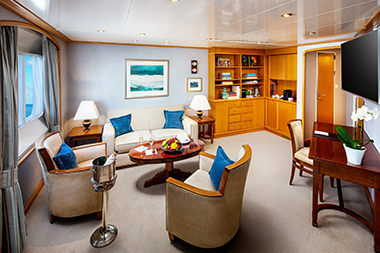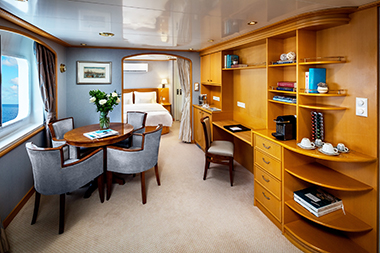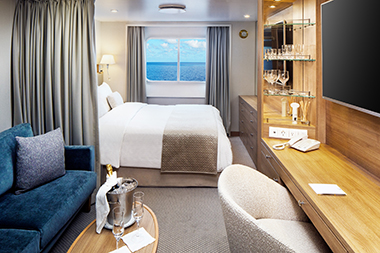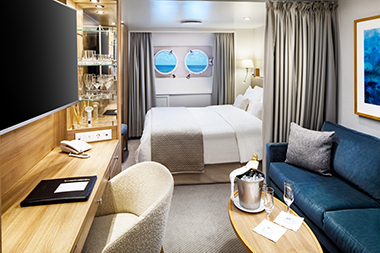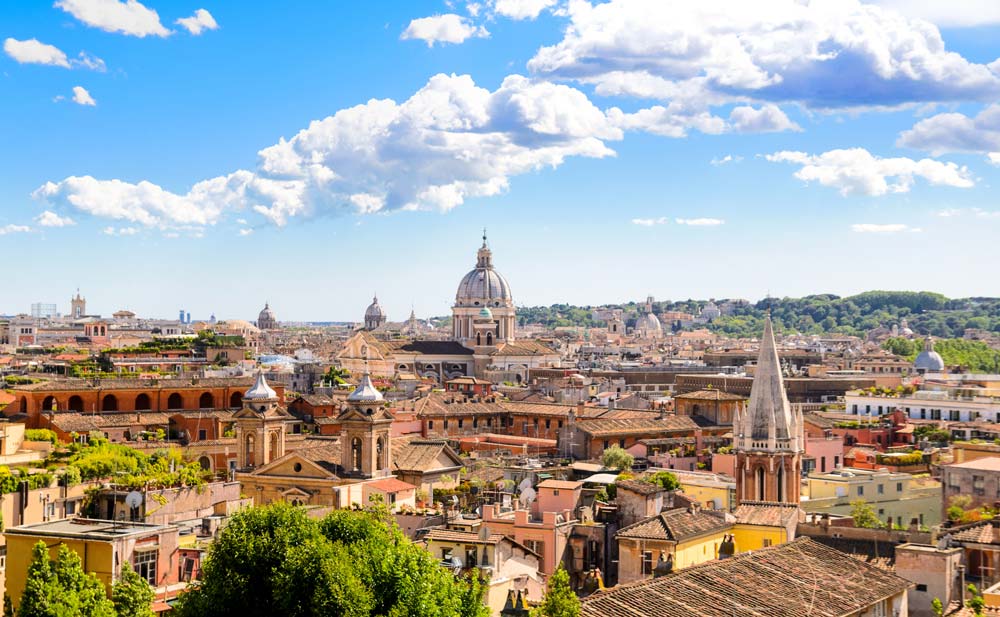
Civitavecchia is a major port located in Rome, primarily utilized for maritime transportation of goods, as well as a fishing port. The commune’s name means “ancient town” and is one of the “Motorways of the Sea” in the Mediterranean, functioning as one of the main links between the mainland of Italy and Sardinia. The ancient name of the port was “Centumcellae,” first mentioned in a letter written by Pliny the Younger in 107 A.D., although scholars debate on whether the name was about the number of rooms of the Trajan Villa, or the number of natural creeks on the coast. Civitavecchia is a part of the Lazio Territory, an area which was confirmed to have social groups since pre-historic times, and the modern town was built over a pre-existing settlement of the Etruscan people in 107-108 B.C.E. (who debated to have founded Rome). In the beginning of the 2nd century, the harbor and town of Centumcellae were simultaneously developed by Emperor Trajan in the territory of Aquae Tauri. As the town became more popular for ships traveling westbound, the Thermal Baths were constructed on the hill of Ficoncella. Centumcellae flourished in the Imperial Age, and by 538 A.D., it had become a Byzantine stronghold. In 728 A.D., it became a member of the Papal States. The Saracens raided Centumcellae many times in the 9th century, prompting Pope Leo VII to have a newer and more secure settlement built by 854. The town, then known as Civita Vetula, was under the rule of several lords, and the Popes temporarily lost control during the French Rule in 1798-1815. In 1870 it entered the Kingdom of Italy. Civitavecchia was severely damaged during WWII, destroying many of the ancient monuments including Forte Michelangelo, which would be rebuilt in the 1950’s. Popular points of interest include the Forte Michelangelo, Terme Taurine, and Cattedrale di San Francesco. There is a wealth of Roman and Vatican architecture and tourists are encouraged to visit many of the museums and take the cultural tours available in this important sea port.
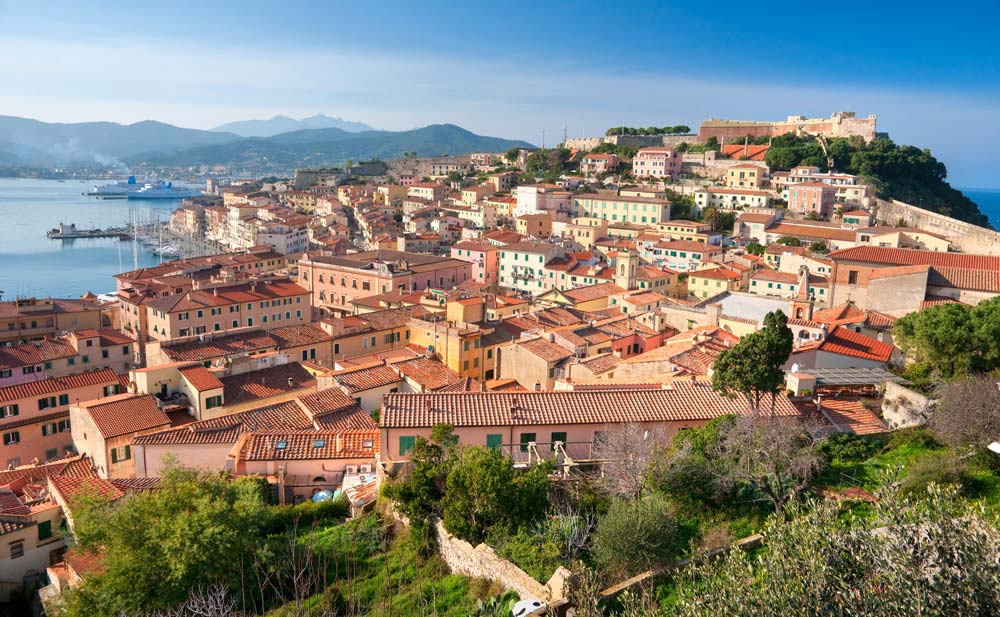
The name Portoferraio, meaning “Iron Port” in Italian, comes from the iron mills that prospered the small town during the 19th century. Due to Napoleon’s exile to Elba in 1814, the entire island enjoyed an age of glory and soon blossomed into a melting pot of different cultures. There are several memories of the past worthy of exploration—from the archaeological findings in Portoferraio’s museums to the impressive fortresses and military constructions such as the Castello del Volterraio and Napoleonic residences. Today Elba’s main attractions include the tranquil beauty of its rugged hills and the crystal-clear blue waters of its bays.
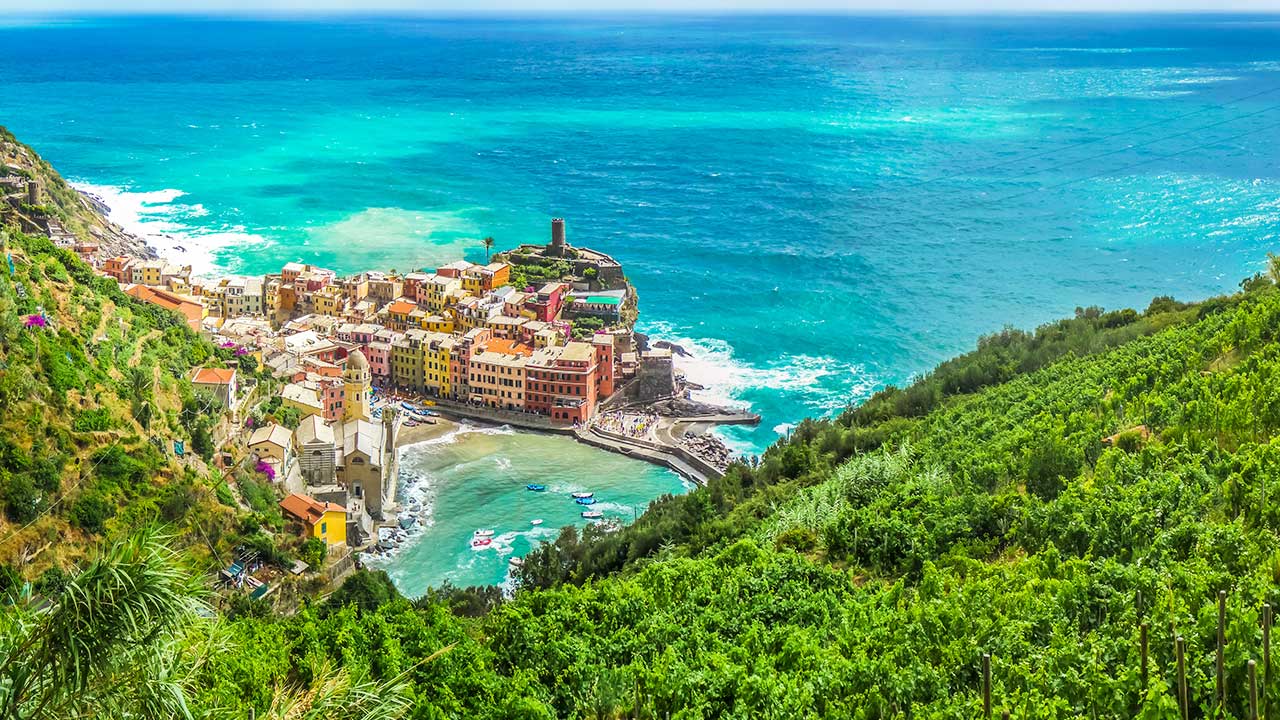
One word – Incredible! Cinque Terre, Portovenere and the three Island of Palmaria, Tino and Tinetto have been added to the UNESCO World Heritage List in 1997. They have been selected for being distinguished examples of the ways in which man has been able to modify and transform the environment without altering the beauty of the original natural landscape. Most of our valued guests will participate in the ever popular “Cinque Terre: Don’t go Home Without It” Land Adventure. Others may enjoy the guided village walk or go hiking on several trails leading down the coast. Most guests will make a purchase of the amazing local pesto and we are fairly certain our Executive Chef will do the same. Be prepared for an incredible dinner al fresco this evening!

Welcome to Tuscany! Marina di Carrara (city of Carrara) is about 1-hour drive from Florence and under an hour from nearby Lucca which makes it an optimal port for these sister cities. The city’s history dates back to ancient Roman times when it was known for the marble it produced, Carrara Marble.
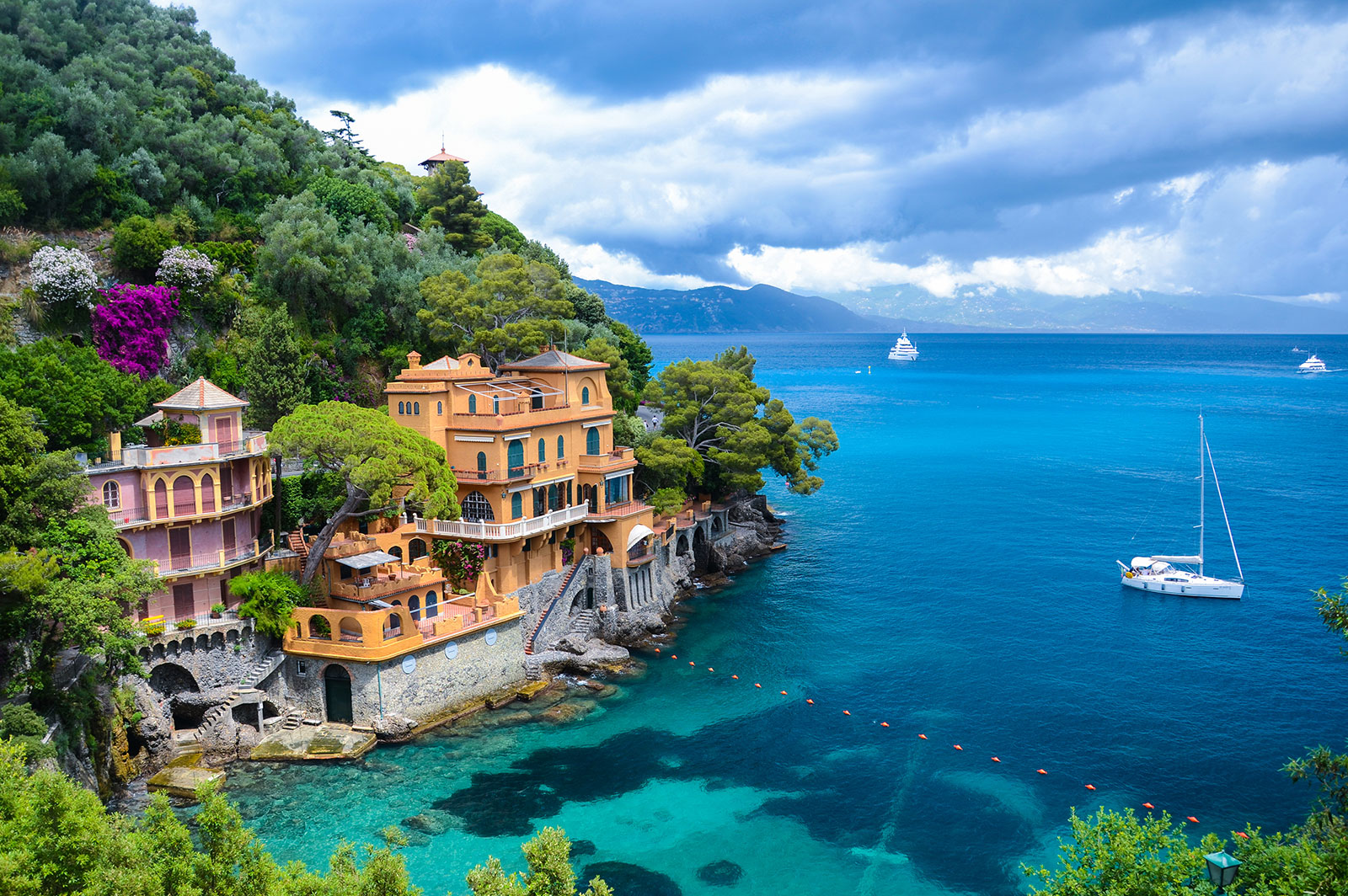
The picturesque fishing village of Portofino can be found along the Italian Riviera, and is one of the most popular resort getaways in all of Italy. Portofino has been a staple of tourism in Italy since the 19th century, officially replacing fishing as its chief industry in 1950. Portofino is twinned with Kinsale, Ireland, and Palma (de Mallorca), Spain. Roman philosopher and military commander Pliny the Elder declared that Portofino was founded by the Romans, and with the high concentration of dolphins found in the Tigullian Gulf, it was named the “Port of the Dolphin” - Portus Delphini. Portofino was primarily a member of the Republic of Genoa in early days, and never provided more than a resting area for the merchant navy due to its naturally cramped harbor. The Republic of Florence purchased Portofino in 1409 from French King Charles VI, yet returned when the Florentines were ousted. Portofino became a part of the Kingdom of Sardinia in 1815, and during Risorgimento, it became a member of the Kingdom of Italy in 1861. Aristocratic visitors from Northern Europe began visiting the town in the 19th century, leading to eventual vacation homes and celebrities appearing in Portofino. Portofino is naturally beautiful port with colorful, iconic architecture that was even replicated as a hotel resort at the Universal Orlando Resort in Orlando. The Tokyo Disney Resort in Japan also created a seaside town based on Portofino. Tourists like to visit the museum Castello Brown, which provides a great view of the town, as well as the churches of St. Martin, Oratorio di Nostra Signora Assunta, and St. George - the latter containing some relics of saints. When visiting Portofino, be sure to take a guided dive to the Portofino Marine Park, as well as take a glimpse at the recently restored famous underwater statue, the Christ of the Abyss.
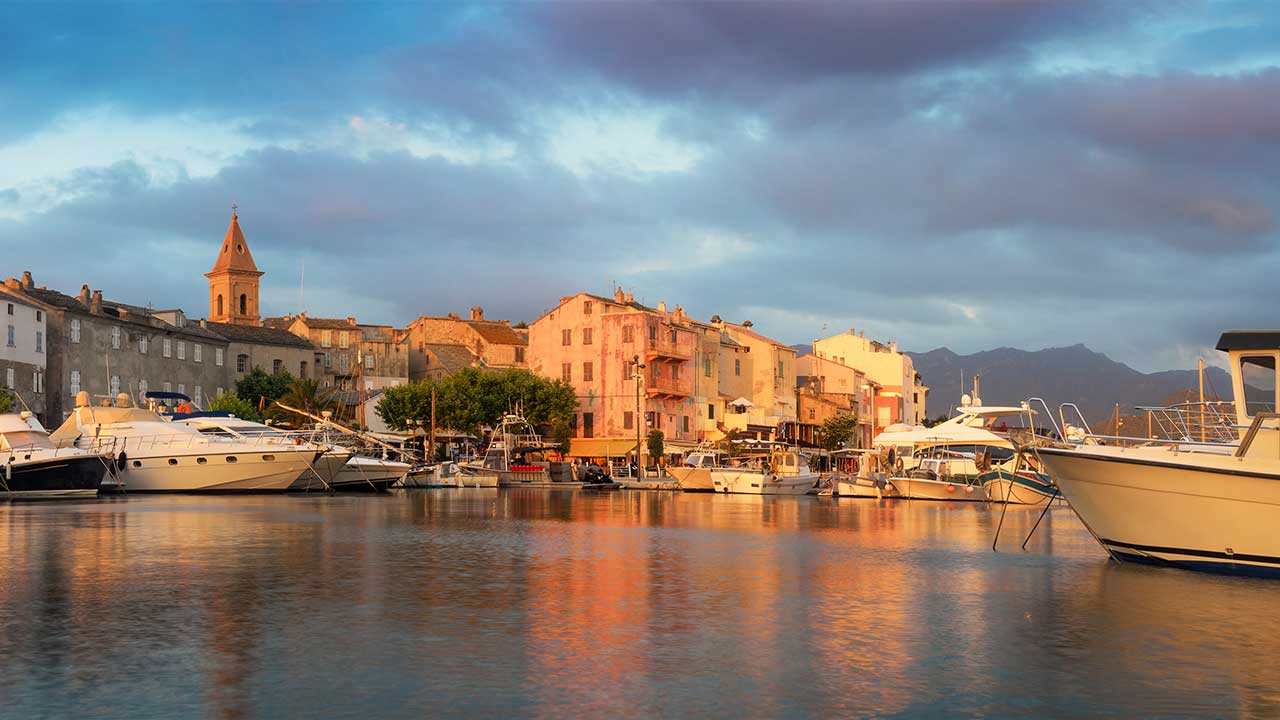
Originally a fishing village on the northern coast of the French island, Saint-Florent has become a delightful yachting port to visit. Like similar small ports in the Mediterranean, guests can enjoy sailing, touring, beautiful beaches, and a selection of restaurants, shops and cafes. If you seek historical and cultural experiences, be sure to visit Citadelle Saint Florent, built in the 1400’s to guard the harbor below.
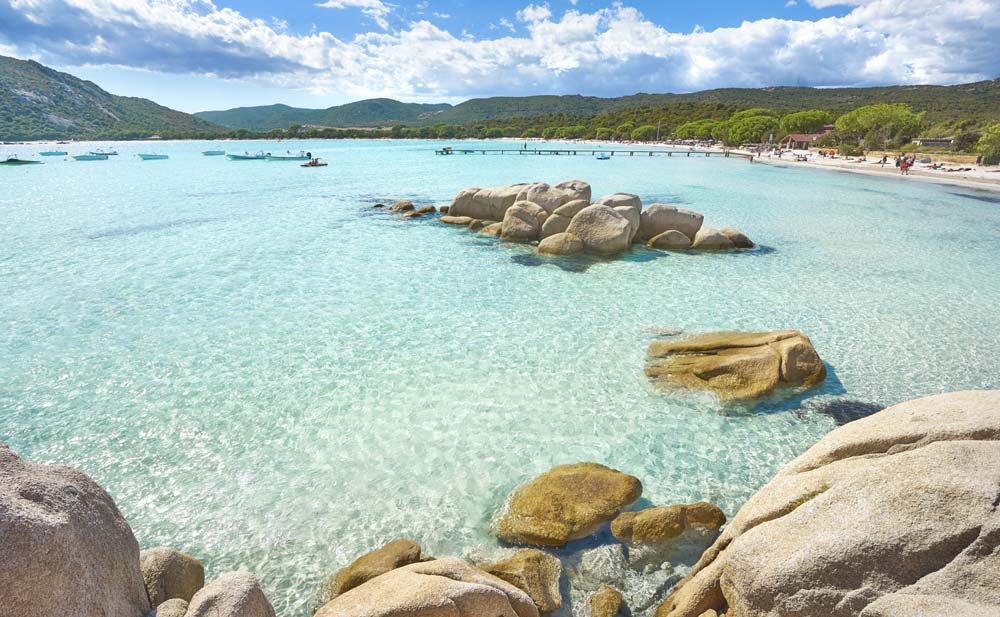
Porto-Vecchio, Corsica is a small port of call in the Corse-du-Sud department of France. The cities popularity increased dramatically since hosting the start of the first stage of the 2013 Tour de France. Just outside of town they have some remarkable beaches. There’s also options for guests to visit Bonifacio as well as the signature golf course Sperone. SeaDream anchors of the harbor and tenders directly to the town center. Water sports will be offered in the morning and afternoon from the marina platform (weather permitting).
Suites & Staterooms
*Single Supplement for this voyage is 200% for Yacht Club Deck 2, 3 and 4. For Commodore, Admiral and Owners Suite, a 200% single supplement rate applies.
Government, Port, Document Issuance, Handling & Service fees: $427 per guest (included)
Please Note: Fares are capacity controlled and may change without notice. The fares are per person based on double occupancy. Single and third person rates are also available. SeaDream Yacht Club strongly recommends that all guests purchase travel insurance.
Yachting Land Adventures & Activities
Please check back soon for updates.
Testimonials
The best vacation we have ever been on. The combination of relaxed atmosphere and impeccable service was perfect. Mr & Mrs PedersonConnecticut
This was undoubtedly the best trip my wife and I have ever had. Thank you for this amazing experience. Mr & Mrs FilhoBrazil

